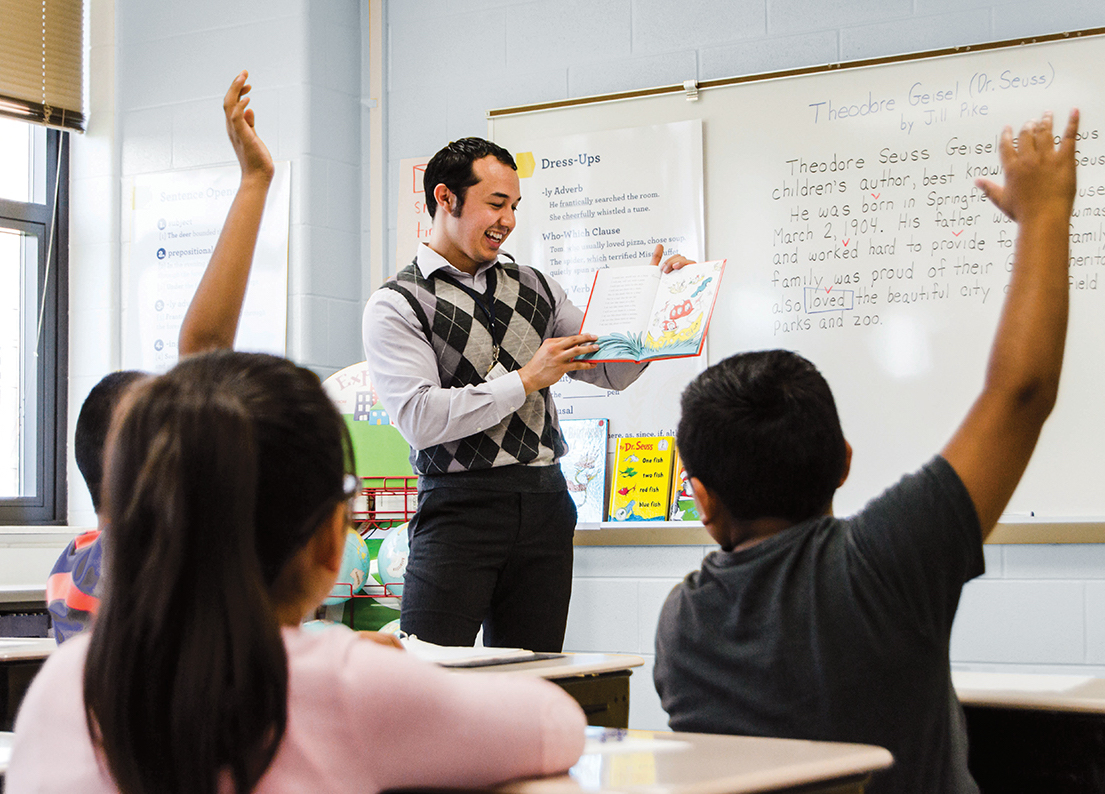
When IEW’s educational consultants talk with teachers who use our method, we always look forward to asking the question, “What surprises you the most?” Regularly the answer has something to do with how much the students engage in the process. But what exactly does student engagement look like when you teach our methodology with fidelity?
Students participate in the process.
This approach to writing draws out even the most intimidated students because you model and guide the process—students can participate when they have ideas and observe you and other students when they are unsure. As you model the process of asking questions to generate ideas and words, they can listen to what is going on in your mind and participate in the process of creating a key word outline. They discover the next step is to use the outline to retell the content, and the purpose is to test the outline, not themselves. The pattern continues with brainstorming stylistic techniques, writing the rough draft, proofreading for errors, and marking the indicators on their papers, which are listed on the checklist. The students feel relief because they know that they are not required to remember everything by themselves as they learn the process. They know why they are doing what they are doing, and they continue to have help through your modeling until they are ready to do it independently.
If the students seem unaware of what or how to do one of the steps or why they are doing it, it could be that they need more repetition to internalize the process. It is better to do short, frequent assignments (our lesson plans include a writing assignment once a week) especially for younger students. The other problem at the root of avoidance is students who are required to work independently before they are ready.
Students take risks.
Once the students are comfortable with the writing process, they truly open up. They can focus on the correct stage of the writing process because they know each step and its purpose. Rather than facing overwhelmed students, you will find yourself working with learners who feel equipped and willing to contribute their words and ideas. You will discover that they know more words than you think—than they think! The new words they learn while they are brainstorming stylistic techniques end up in their working vocabulary. If you aren’t careful, you will create a classroom of little Horshacks.
If you are not seeing your students freely engaging in this way, it could be because you are correcting their choices too soon (read the fourth and fifth paragraphs of this blog post), which gives the kids the impression that there are right and wrong answers when creating an outline and brainstorming word choices. If they begin thinking that way, they will focus on not making mistakes rather than on learning through making choices.
Students learn from their peers.
In IEW classrooms, the students don’t only learn from the teacher. They learn when they observe different students in the class offer their suggestions. A healthy respect develops among the students. As you work together, different students’ strengths shine when they contribute questions or their choices for key words, organization, or word choices, as well as their understanding of grammar. They will naturally start asking each other for ideas or help, and you will enjoy the beauty of the classroom working together as a community.
If you don’t see that developing, it could be because you aren’t filtering the students to independence when they are ready. At first the kids with a strong linguistic background or those who are naturally gifted will have the most suggestions and will have their hands up first. The other students will learn much from them. However, be sure to get the students who are answering first with great ideas because they understand working independently. This way the students who have great ideas but aren’t as fast have an opportunity to shine. This also helps students who have a tendency to be introverted.
Making sure that your classroom experiences the fruits of student engagement is worth any adjustments you still need to make in your teaching of our methodology. Students who are truly engaged in the writing process experience contentment and satisfaction in both the process and the finished product. Want to see what I mean? Check out what happened in Adam Bautista’s classroom last year.
|
Janet Spitler, IEW's Schools Division Director, heads up our efforts to support full-time schools with ongoing training, teacher mentoring, telephone contact, and classroom-specific materials. With abundant classroom experience, Janet shares her experience of building a linguistically rich environment to develop a love for language and a community of learners. While she cherishes the time she spent influencing students and parents, today she applies that same dedication to the classroom teachers who use this method. She is accredited as an IEW® Instructor at the highest level. |

